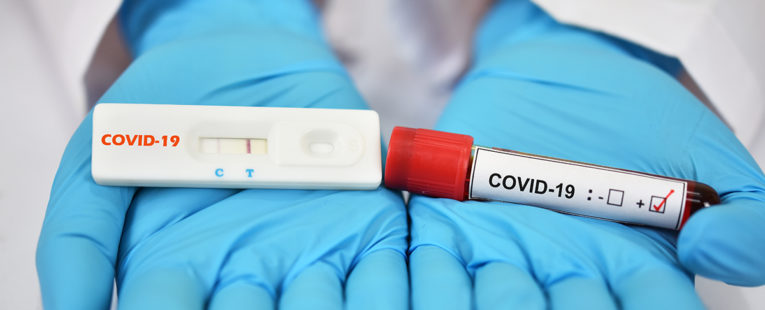
What is Electromyography?
Electromyography is a diagnostic test used by doctors to diagnose muscle disorders. In an EMG, an electrode-tipped needle is inserted in a muscle to record the electrical activity. Your doctor might also use an audio amplifier to hear the electrical signal.
What is the Nerve Conduction Study?
Neuroconduction studies (NCSs) measure the speed with which a neuron sends an electric signal to a muscular. This speed can be used as a way to determine if your nervous system is working correctly. This helps your doctor determine if there is a problem in your nerves or in the way your muscles are responding to the nerve signal.
What are nerve conduction EMG tests?
Both tests can help diagnose muscle and neurological disorders. If you are experiencing symptoms that may be related to a muscle or nerve problem, your doctor may order both tests at the same time.

NCS:
You will lie down on the table and your provider will insert a needle with an electrode into the muscle that is affected. He or she will then connect the wires to a machine that records your muscle's electrical signals at rest and while you are slightly flexing it.
On a computer, the electrical signals are displayed. This allows your doctor to see how effectively your nerves send messages to your muscles. The monitor also displays wavy, spiky and other lines that indicate how much electrical activity there is in your muscles.
Your doctor may ask you to make specific movements with the needle in your muscle. It's normal to feel some pain during each insertion.
What is the needle electrodes?
The wires on the needle electrodes are connected to needles. The needle electrodes will be placed in the muscles being tested. They are then moved around by the doctor several times. You might feel a quick, sharp pain when the needle electrode is inserted into your muscle. The needle electrodes must be removed once the test has been completed.

How does the test work?
During the exam, you'll be asked to relax before performing specific movements. For example, you might be asked to lift your arm, or to flex the wrist of your hand.
When you move your muscles, they will send a small electric signal to the electrodes. These will then send a signal to your nerves. Your provider will record the time taken for your muscle's response to the nerve signals. This is the conduction rate.
What are your risks?
The needle electrodes may cause bruising when they are inserted in your muscle. This bruising should disappear within a few days. The needle electrodes may cause soreness for one or two days.
FAQ
What is an infectious disease?
Infectious disease can be caused by germs (bacteria or viruses) Infectious diseases can spread quickly by close contact. You can get measles or mumps, rubella (German whooping cough), pertussis/whooping chives, rubella ("German measles"), measles), pertussis ("whooping cough"), rubella ("German measles"), chickenpox), strep thyme), hepatitis A/B, HIV/AIDS), herpes simplex viruses, syphilis, gonorrhea and chlamydia
What do you think are some of the most important issues facing public health today?
Many people are affected by obesity, diabetes and heart disease. These conditions result in more deaths per year than AIDS combined with car crashes and murders. A poor diet, lack exercise, and smoking can all lead to high blood pressure as well as stroke, asthma and other health problems.
What is a health system in public health?
Health System refers to all the activities involved in providing medical services for a population. It includes all aspects of service delivery, finance, regulation and education.
What is my role in public health?
You can help protect your own health and the health of others by taking part in prevention efforts. By reporting illness and injury to health professionals, you can improve public health.
What is the difference of public health and health policies?
In this context, the terms refer both to the decisions made and those of legislators by policymakers. These policies affect how we deliver healthcare services. It could be local, regional, or national to decide whether a new hospital should be built. Similarly, the decision about whether to require employers to offer health insurance may be made by local, regional or national officials.
How can our health system be improved?
Our health care system can be improved by ensuring everyone gets high-quality care regardless of where they live and what type of insurance they have.
We should ensure that all children receive necessary vaccinations, so they don't develop preventable diseases like measles, mumps, and rubella (MMR).
We must continue to work towards reducing the cost of health care while ensuring that it remains accessible for all.
What are the services of health care?
A health care provider is a medical institution that offers healthcare services for patients. An example of a healthcare service is a hospital. A hospital usually has many departments, such as an emergency department, an intensive care unit, an operating room, pharmacy and outpatient clinics.
Statistics
- Consuming over 10 percent of [3] (en.wikipedia.org)
- Healthcare Occupations PRINTER-FRIENDLY Employment in healthcare occupations is projected to grow 16 percent from 2020 to 2030, much faster than the average for all occupations, adding about 2.6 million new jobs. (bls.gov)
- Over the first twenty-five years of this transformation, government contributions to healthcare expenditures have dropped from 36% to 15%, with the burden of managing this decrease falling largely on patients. (en.wikipedia.org)
- The health share of the Gross domestic product (GDP) is expected to continue its upward trend, reaching 19.9 percent of GDP by 2025. (en.wikipedia.org)
- About 14 percent of Americans have chronic kidney disease. (rasmussen.edu)
External Links
How To
What is the Healthcare Industry Value Chain
The healthcare industry value chain consists of all the activities involved in providing healthcare services to patients. This includes the operations of hospitals and clinics as a whole, and the supply chain that connects them to other providers. This results in a continuum that starts with diagnosis and ends with discharge.
There are four components to the value chain:
-
Business Processes: These are all the tasks performed by people throughout the entire delivery of healthcare. A physician might order medication for a patient, then perform an examination. Each step of the process must be completed accurately and efficiently.
-
Supply Chains: All the organizations involved in making certain that the right supplies reach all the people at the appropriate time. A hospital might have several suppliers. These could include lab testing facilities, imaging centres, pharmacies, or even janitorial personnel.
-
Networked Organizations: To coordinate these entities, it is necessary to have some means of communication between them. Hospitals often have several departments. Each one has its own phone number and office. Each department will have its own central point, where employees can get updates and ensure everyone is informed.
-
Information Technology Systems (IT) - IT is essential in order for business processes to run smoothly. Without it, everything could go down quickly. IT is also a platform that allows for the integration of new technologies into the system. A secure network connection can be used by doctors to connect electronic medical records to their workflow.